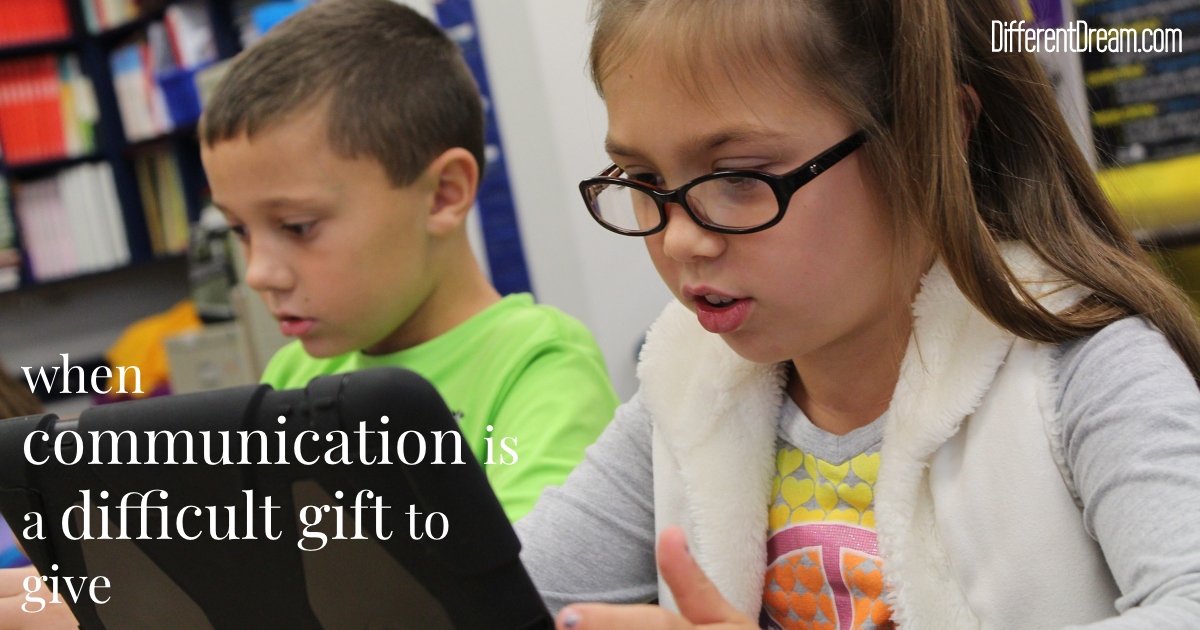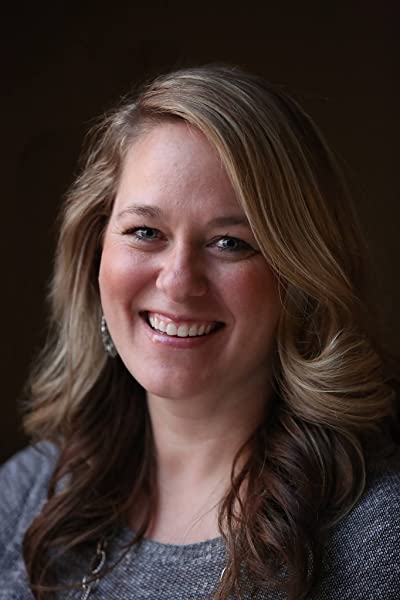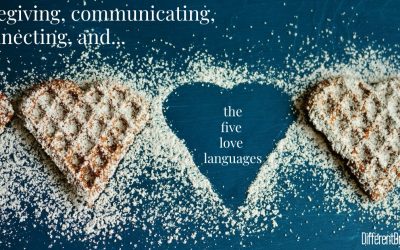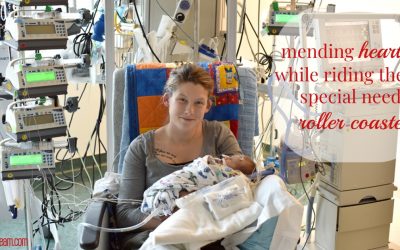Communication Is a Gift

Communication is a gift for a child who is non-verbal or has delayed speech. Our youngest daughter, Ellie, recently started using a communication device at school. We felt a sense of dread as the words “communication board” and “iPad” came home.
You see, our family, including extended family, took sign language classes when our oldest daughter, Abbey, was 3. I also taught myself using signing videos and other things to give her a mode of communication.
She loved to attempt to sign.
She attended our local preschool disabled program, and it was clear that her verbal skills would not progress. She needed to be immersed in the world of sign language if it was going to sink in. When she was 5, she moved to a school for the hearing impaired. When she was 9, that school decided it was no longer the right fit for her given her extensive physical needs. She transitioned to a school for the severely or multiply handicapped. That school decided sign language was not appropriate for her because her cerebral palsy made it hard for her to properly sign.
They suggested an iPad.
The iPad went back and forth from home to school for years. While Abbey was somewhat interested in games and matching, she refused to use it to communicate. Sometimes she would push the iPad at me and shake her head “no” or put it down on the floor! It was heartbreaking, discouraging, and a lot of money was wasted. Then during her high school transition, the team saw her eagerness to sign She is using sign language in her high school and thriving.
The iPad is sitting in a box.
Now Ellie is at the starting line. I burst into tears while watching a video her teacher sent about the importance of being “all in” with the device. “We’ve already done this!” I thought. “It was so discouraging! I can’t do it again. Maybe we need to accept that she can’t communicate.”
Her team would not give up.
Despite COVID and all the transitions since 2019, they evaluate her and are working diligently to get her to use her iPad. We brought it out to try when she asked for a toy. To my surprise and delight, she needed only one verbal cue to point to the correct icons. When I couldn’t remember how to make the iPad “talk,” she laughed and clicked the proper place.
She loved it.
If you are struggling with finding a way to communicate with your disabled child, I want you to know that we’ve been there. It feels hopelessness and exhausting to try something over and over to no avail. But sometimes the breakthrough is around the corner. Or it comes in an unexpected way.
Not every child will achieve the level of communication you hoped for, but keep trying! Their ability to communicate may be hindered, but ours is not. Keep communicating with your child no matter what their ability to communicate with you is. Keep talking, keep explaining, keep including them in the conversation. We cannot truly know what our non-verbal children understand. Communication is a gift we can give to them.
Do you like what you see at DifferentDream.com? You can receive more great content by subscribing to the Different Dream newsletter and signing up for the daily RSS feed delivered to your email inbox. You can sign up for the first in the pop up box and the second at the bottom of this page.

By Kimberly Drew
Kimberly grew up and went to college in the small town of Upland, IN. She graduated from Taylor University with a degree in Elementary Education in 2002. While at TU, she married her college sweetheart and so began their adventure! Ryan and Kimberly have four amazing kids on earth (Abigail, Jayden, Ellie, and Cooper), and a baby boy waiting for them in heaven. Their daughter Abigail (Abbey) has multiple disabilities including cerebral palsy, a seizure disorder, hearing loss, microcephaly, and oral dysphagia. She is the inspiration behind Kimberly’s desire to write. In addition to being a stay-at-home mom, Kimberly has been serving alongside her husband in full time youth ministry for almost fourteen years. She enjoys working with the senior high girls, scrapbooking, reading, and music. You can visit Kimberly at her website, Promises and Perspective.
Subscribe for Updates from Jolene
Related Posts
Transitioning Between Rhythms and Tempos
Music therapist Jim Gaven explains how his class transitioning between rhythms and tempos helps children more easily transition through life.
Fostering Communication and Connection Between Caregiving Parents
Fostering communication and connection between caregiving parents gets a little easier with these love language ideas.
The Special Needs Roller Coaster
Today’s blogger describes how her child’s diagnosis landed her on the special needs roller coaster and how she’s learned to enjoy the ride.






0 Comments